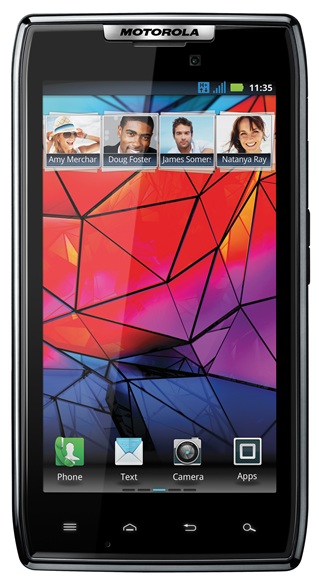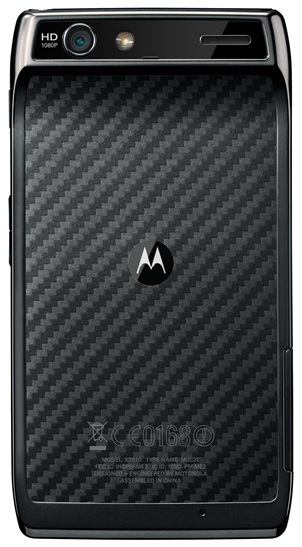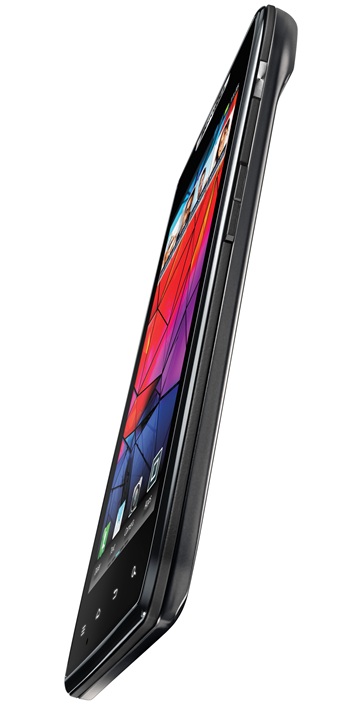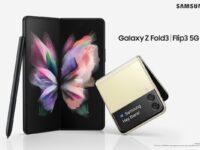Motorola a few hours ago took covers off its newest Android powered handset, the Droid RAZR at a press event. It’s been quite some time since Motorola has marketed a device using the RAZR brand. The last device that the company used the RAZR brand name was back in 2007 when they launched the RAZR 2 series of feature phones. Prior to that, they had the original RAZR clamshell which was a rage back in 2004. That device still remains the largest selling clamshell phone ever with over 130 million of them sold.
With the RAZR brand having an illustrious history like that, it was obvious that Motorola would revive the brand for a really special device.
Say hello to the new Droid RAZR. Like the “original” RAZR which was back then the thinnest phone money could buy, the Droid RAZR stakes the claim to being the thinnest smartphone ever. At just 7.1 mm, this thing makes the iPhone S which was already thin, feel obese and bloated. It is also much lighter – barely tipping the scales at 127 grams. The iPhone 4S in comparison weighs 140 grams. The phone gets a KEVLAR coating at the rear which if you might be aware is the same material that is used to make bullet-proof vests.

The screen is covered with a layer of Corning Gorilla glass – and if that wasn’t all, it features something known as Splash Guard technology that makes the device fairly resistant to water. Of course, it is not expected to survive a scuba diving session unscathed – but you can use the phone in a drizzle for example. Motorola has somehow managed to pack in a 1780 MAH battery on this phone which is an impressive feat of engineering to say the least.
Let’s now delve in to the all-important specs on this one. The RAZR is powered by a dual core processor clocked at 1.2 Ghz. This coupled with the bucket load of 1 GB RAM should make the device quite fast. It runs the latest – and probably the last version of Android 2.3 (Gingerbread) – the version 2.3.5. This is because we could see new devices hopping on to the Ice Cream sandwich bandwagon soon. More on that later though.

The display on this phone measures 4.3 inches across and boasts of qHD resolution (540*960) which compares well with the 960*640 pixel display on the iPhone 4S. The iPhone however still has the edge when it comes to sharpness – thanks to the greater number of pixels it packs in on a much smaller display. However, the addition of Super AMOLED technology by Motorola should make things better for Droid RAZR users.
It is hard to believe that Motorola has managed to cram in an 8 megapixel camera on a device this thin. It can even do full HD playback and recording. It would be some time before we can compare the image quality on this one but, we expect it to be quite decent.
The Droid RAZR is also targeted by Motorola as an Enterprise device with the phone claiming to be equipped with features like Remote wipe, pin lock and government-grade encryption for email, calendar and contacts as well as voice and video chat conferencing. Whether the handset is accepted by the Enterprise community is something we would find out in the long run.

On the connectivity front, the device is fairly covered with probably the only thing missing being an NFC chip. The phone supports Bluetooth 4.0 (low power) as well as 4G LTE network on Verizon. This makes it way faster on such networks than the iPhone 4S which skipped LTE in favor of CDMA EV-DO Rev. A. The international version will support most GSM and HSPA networks.
Another feature that Motorola debuted with the RAZR is the new could based app called MotoCast. This application – while it may look like an iCloud competitor works quite differently in reality. Unlike iCould which lets you store your data in Apple’s servers to be streamed on to any iOS device, MotoCast works more like an application that lets you stream from your own personal cloud. The personal cloud here being your PC or Mac for example. You would not be actually storing the data anywhere else – but your PC. MotoCast simply lets you stream and syncs content to your phone wirelessly. The app can use Wi-Fi or cellular networks for the syncing process depending on where you are.
The RAZR would go on sale worldwide starting the first or second week of November with preorders commencing from October 27. On Verizon, it would be available for $299 with a two-year contract. Without a contract, expect to pay $600 for the handset.





